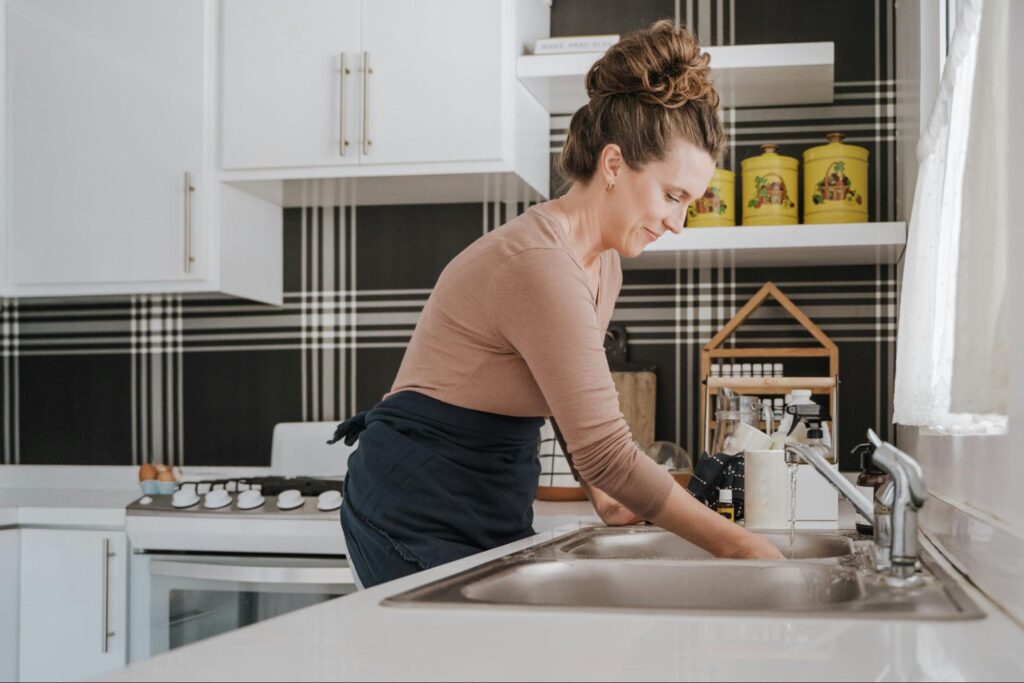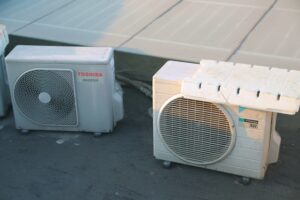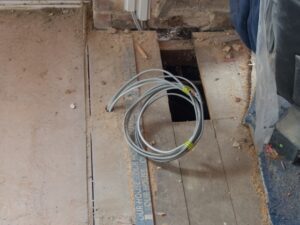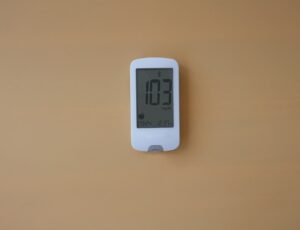Choosing the right sink drain fittings at Bunnings can be a bit overwhelming with so many options available, right?
With various sizes, materials, and designs, how do you pick the one that will work best for your sink and plumbing needs?
Whether you’re tackling a kitchen or bathroom installation, it’s essential to get the right fit to ensure your plumbing system operates smoothly.
If you’re considering a new sink installation or even an upgrade, Excel Mechanical is here to help! As your trusted HVAC and plumbing partner, we offer expert advice and high-quality service tailored to your needs and budget.
Whether for your home or business, you deserve a plumbing system that works seamlessly.
In this blog, we will cover:
- The different types of sink drain fittings available
- Key factors to consider when choosing your fitting
- How to ensure proper installation and maintenance for long-lasting results
Let us help you get the best plumbing solution without the hassle.
Understanding Sink Drain Fittings
Sink drain fittings are essential in plumbing systems. Knowing the different types, materials, and sizes can help you choose the right ones.
Types of Sink Drain Fittings
There are several types of sink drain fittings used in kitchens and bathrooms.
- Pop-up drains have a lever mechanism, usually found in bathroom sinks, that allows you to open and close the plug.
- Basket strainer drains are common in kitchen sinks and include a removable basket to catch debris.
- Grid drains feature a grid top that allows water to flow while catching small items.
Depending on sink usage, each type serves different purposes and may impact installation and maintenance procedures.
Materials Used in Drain Fittings
Drain fittings come in various materials, each affecting durability, cost, and appearance.
- Stainless steel is popular for its resistance to rust and durability, which makes it ideal for high-use areas.
- Plastic fittings are lighter and usually cost less, making them suitable for less critical applications.
- Brass offers corrosion resistance and a premium look, often used in higher-end installations.
Understanding these materials helps you select fittings that will provide longevity and match the aesthetic of your space.
Standard Sizes and Measurements
Standard sizes for drain fittings ensure compatibility with most sink units.
Kitchen sink drains measure 3.5 inches, while bathroom sinks typically use 1.25-inch or 1.5-inch drains. Proper measurements are essential to prevent leaks and ensure efficient water flow.
When choosing fittings, considering the thickness of the sink and countertop materials is crucial to obtaining the correct fitting size.
Installation Guide
This guide will cover essential tools, a clear installation process, and common mistakes when installing sink drain fittings. Each section provides helpful advice to ensure success.
Tools Required for Installation
To successfully install sink drain fittings, start by gathering all necessary tools.
You will need a wrench, a plumber’s putty, and a bucket for water catchment. A pipe cutter might be useful if adjustments are needed. Always have a towel or cloth ready to dry spilled water.
Safety gear like gloves and safety glasses can protect you from injury.
Before beginning, double-check that all parts and materials included in the fitting package are present. Keeping these tools on hand ensures the installation goes smoothly.
Step-by-Step Installation Process
- Begin by disconnecting the existing plumbing using a wrench.
- Place a bucket underneath to catch any water.
- Clean the area thoroughly to ensure the new fitting adheres properly.
- Next, apply the plumber’s putty around the drain and press it into place.
- Install the gasket and nut beneath the sink, tightening them securely.
- Attach the tailpiece and P-trap, making sure all connections are sealed tightly.
- Run water to check for leaks.
If done properly, the installation should leave no gaps or leaks.
Common Installation Mistakes to Avoid
One mistake is overtightening connections, which can lead to breakage.
Make sure you use a gentle yet firm hand. Ensure the correct type and size of the fitting is used, as mismatched parts can cause leaks.
Another oversight is failing to test for leaks by not running water post-installation. Regular checking ensures everything is working correctly.
Relying on professional help can help maintain your plumbing needs.
Maintenance Tips
Maintaining your sink drain fittings is essential to ensure they function correctly and last longer. You’ll learn how regular cleaning can prevent problems and how to address common issues when they arise.
Regular Cleaning and Care
Clean your sink drain fittings regularly to keep them in top condition.
Mix baking soda and vinegar to break down debris and residue, followed by hot water to flush away any remaining particles. This helps prevent clogs and maintains smooth water flow.
A simple brush can effectively scrub around the drain and fittings to remove any buildup. Keeping a monthly schedule for these tasks can prevent future issues and save you from difficult situations.
Don’t forget to inspect the fittings for any signs of wear or damage. Replace any worn-out parts promptly to avoid more significant problems later.
Troubleshooting Common Issues
Sometimes, you may encounter issues such as slow drainage or unusual odors from the sink. A common cause is a blockage within the drain. If you’re comfortable with DIY solutions, use a plunger or a plumbing snake to remove the clog.
If persistent problems persist, it might be an issue with the fitting connections. Check for leaks and tighten any loose parts. If you feel uncertain or need a professional touch, consider contacting experts like Excel Mechanical. We ensure quality and reliability in HVAC and plumbing services.
Our team is dedicated to delivering the best solutions for both residential and commercial needs, always striving for exceptional quality and value tailored to individual requirements.
Product Selection
When exploring sink drain fittings at Bunnings, it’s essential to know the variety of options available and consider factors like brand reliability and reviews. Pay attention to product details to pick what’s best for your needs.
Bunnings’ Range of Sink Drain Fittings
Bunnings offers a broad selection of sink drain fittings for various kitchen and bathroom needs. Materials like stainless steel, plastic, and brass are available, catering to different price points and durability requirements.
The fittings come in various sizes and are compatible with different sink types, from kitchen to bathroom models. Whether you’re doing a quick fix or planning a full renovation, Bunnings fits your specific application.
Comparing Different Brands
When choosing a brand, consider quality and price.
Some brands focus on premium materials with longer lifespans, while others may provide more economical options. Comparing brands helps you find fittings that match your durability expectations without overspending.
Bunnings carries well-known and emerging brands, allowing you to select based on previous experiences and specific requirements.
Reading Product Reviews
Reading customer reviews can provide insight into the real-world performance of sink drain fittings. Buyers often share experiences regarding installation ease, durability, and value for money.
Reviews can highlight common issues or unexpected benefits, aiding your decision-making process. Pay attention to the feedback on brands you’re interested in and consider if their advantages align with your requirements.
Always look for patterns in reviews to ensure a balanced viewpoint.
Replacement and Upgrades
Replacing or upgrading sink drain fittings can enhance performance and address issues like leaking. Excel Mechanical provides reliable solutions to meet your needs and budget.
When to Replace Your Sink Drain Fittings
You should consider replacing sink drain fittings when there are persistent leaks or signs of corrosion. Leaks can lead to water damage in your kitchen or bathroom.
Corrosion weakens metal parts, causing them to break easily. Visible signs include rust or green stains. Another reason for replacement is outdated fittings that do not match your current decor or have become inefficient over time. If water drains slowly, it might be time for new fittings.
Investing in quality replacement fittings can prevent future problems and maintain a clean look.
Upgrading for Better Performance and Efficiency
Upgrades can improve drain performance and water flow efficiency. Modern fittings often include features like anti-clog systems. These help prevent blockages and make cleaning easier.
Additionally, newer models might have built-in seals to reduce leaks. Opt for durable materials, such as stainless steel or premium plastics. These materials last longer and require less maintenance.
If you are unsure about the best options for your setup, consult a professional.
Environmental Considerations
Choosing sink drain fittings with environmental benefits can minimize ecological impact. Selecting recyclable materials or having a smaller environmental footprint can also make a difference. Proper disposal of old fittings is equally important to prevent unnecessary waste.
Eco-Friendly Sink Drain Options
When considering eco-friendly sink drain options, look for recyclable or sustainable materials. Brass and stainless steel are good choices since they last long and can be recycled.
Another option is PVC-free plastic, which is less harmful to the environment.
You can also look for fittings that comply with eco-certifications, which ensure the product meets specific environmental standards.
Disposal of Old Drain Fittings
Properly disposing of old drain fittings is crucial to reduce environmental impact.
- Metal fittings can often be taken to recycling centers. Make sure to separate metal parts to maximize recycling efficiency.
- Plastic fittings can be trickier, as not all plastics are recyclable. Check local recycling guidelines to see if your old fittings are accepted, or consider donating them if they are still usable.
Legal and Compliance
Ensuring sink drain fittings meet legal requirements is crucial for safety and longevity. Key areas include adherence to building codes and understanding warranty details.
Building Codes and Standards
When installing sink drain fittings, compliance with local building codes is critical. These codes ensure that installations are safe and efficient.
You should verify the materials meet specified standards for durability and safety. Plumbing fittings must often adhere to national standards, such as AS/NZS 3500 in Australia, which covers the plumbing and drainage requirements. Compliance ensures installations are not only lasting but safe.
Hiring a reliable company can provide assurance. Professionals ensure that installations conform to all local and national codes, preventing potential fines or necessary alterations down the line.
Always check for updated codes before an installation to avoid non-compliance.
Warranty and Guarantee Information
Understanding warranties and guarantees for sink drain fittings is vital.
Most products have a manufacturer’s warranty covering defects, but it is important to read the terms carefully. Know what is covered and the duration of the coverage. This helps in case defects or issues arise after installation.
Knowing the difference between a warranty and a guarantee can help you understand your rights should a problem occur.
Keep all purchase receipts and documentation handy for claims.
Pricing Information
Knowing the costs involved with sink drain fittings at Bunnings and understanding budgeting for your project is crucial. Careful cost management helps you make the most of your budget.
Cost Considerations
The prices for sink drain fittings at Bunnings can vary based on material and brand. Stainless steel options might cost around $15 to $30, while plastic fittings are cheaper, usually falling between $5 and $15.
Looking for additional parts like washers and seals could add to the cost but ensure a proper fit. Some fittings might come as part of a kit, reducing the need to buy additional items.
To get value, compare prices from brands or materials. Sales or discounts might also be available. This helps keep costs down.
Budgeting for Your Project
When planning a project, consider all potential expenses beyond fittings. Include other required tools or accessories that could increase your budget.
An estimated budget allows for flexibility. Extra costs might arise, especially if unique sizes or styles are needed.
Excel Mechanical offers professional solutions in HVAC and plumbing. With a focus on exceptional quality and great value, it’s smart to match our superior services with your purchase from Bunnings.
Proper budgeting ensures you’re prepared for a simple repair or a more complex installation.
Frequently Asked Questions
When it comes to choosing the right sink drain fittings at Bunnings, there are always questions that pop up. Don’t worry, we’ve got you covered with answers to some of the most common queries people have. By the end of this section, you’ll have everything you need to make an informed decision!
How do I choose the drain fittings for my kitchen sink of the correct size?
Start by measuring the diameter of the sink drain opening. Knowing this helps you pick compatible fittings. Manufacturers provide sizing information on packaging or listings. Checking with a sales associate at Excel Mechanical can help ensure a precise fit.
What types of plastic drain fittings are available for sinks?
Plastic drain fittings are made of PVC or polypropylene. They are lightweight and corrosion-resistant, making them ideal for various plumbing needs. These fittings often include components like elbows, traps, and adapters for different connections.
Which kitchen sink rubber seal is compatible with my setup?
To find the right rubber seal, check the dimensions of your sink drain. Rubber seals must fit snugly to prevent leaks. Consult Excel Mechanical professionals for recommendations to ensure compatibility with your existing plumbing setup.
What should I consider when selecting a sink strainer?
When picking a sink strainer, consider the size of your sink drain and how often you’ll need to remove debris. A good strainer should catch food particles but allow water to flow freely. Look for options that are easy to clean and durable.
How do I determine which plug and waste size is needed for my sink?
Measure the sink’s plug hole and the thickness of the material around it. The size must match the plug diameter and the waste outlet. Many plugs are universal, but checking specifications ensures proper fit and function.
Can a universal sink plug fit any sink model?
Universal sink plugs are designed to fit a variety of sinks. They adjust to different diameters but always check the packaging or product details to confirm compatibility. They often work with many standard drain sizes.




